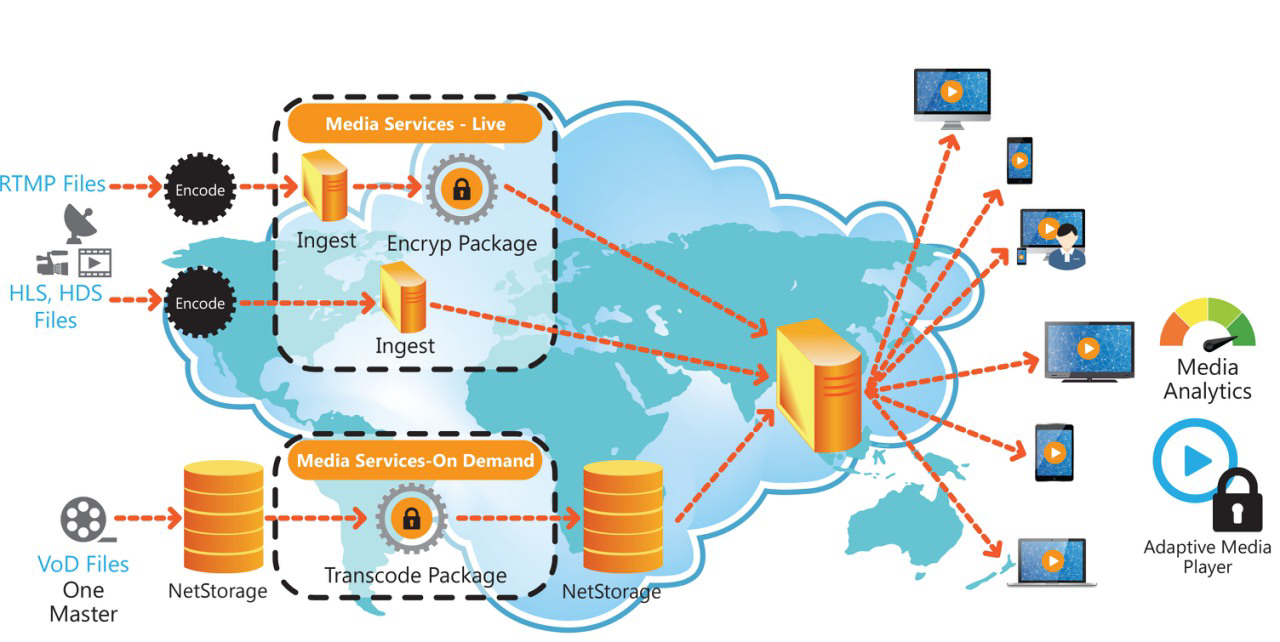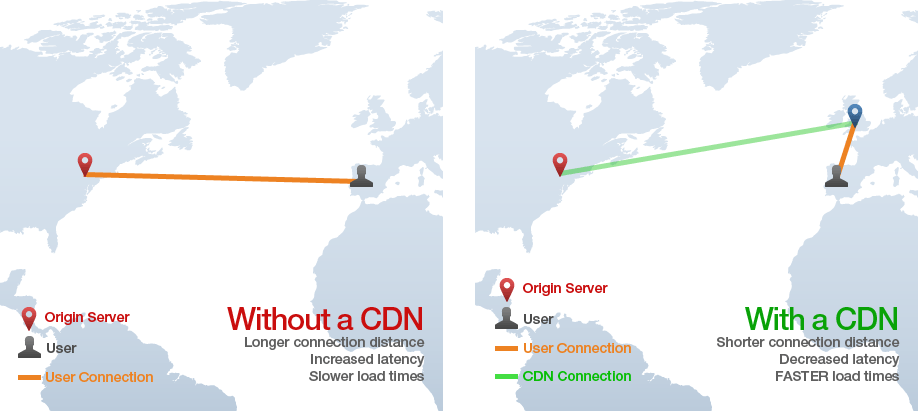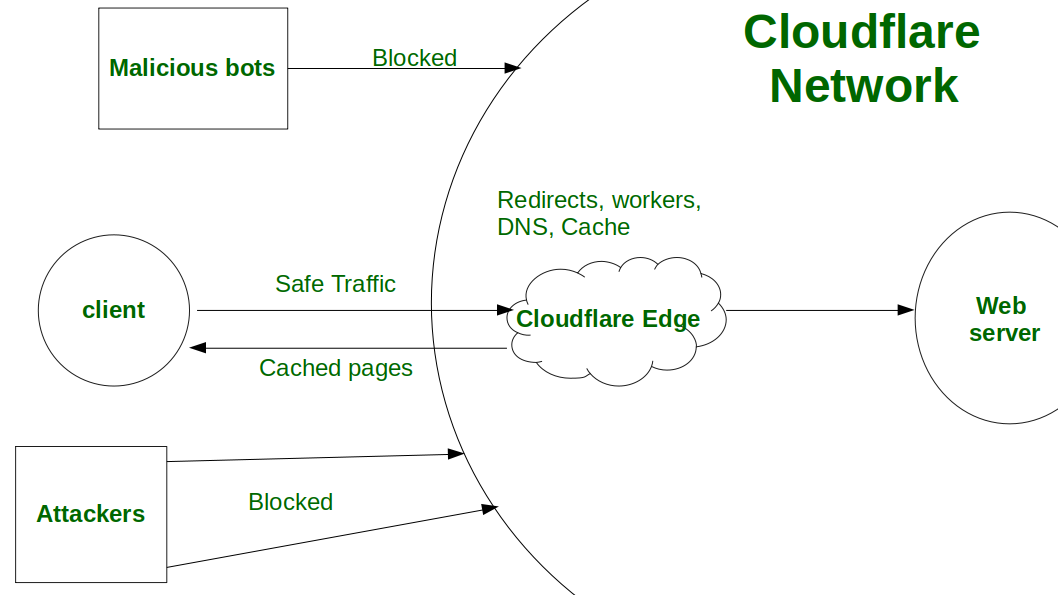A Content Delivery Network (CDN) is a network of servers that distribute content from an origin server throughout the world. It caches the content close to where each end-user is accessing the Internet via a web-enabled device. Furthermore, there are many free CDNs available that provide fast delivery of internet content. Cloud Flare, Incapsula, and Amazon Cloud Font are some of the CDN examples.

Why is a CDN needed?
A content delivery network is needed to deliver online content to users quickly and at scale. CDN has indeed provided users with a fast, reliable, and consistent experience. It balances the overall traffic to give the users the best web experience possible.
Some of the best CDN providers are:
Google Cloud CDN
Key CDN
Stack Path
Cache Fly
Rackspace
Sucuri
Akamai
Microsoft Azure CDN
Leaseweb

How does CDN work?
A Content Delivery Network is placed as a server at the exchange points between different networks. Internet Exchange Points (IXPs) are the primary locations where different Internet providers connect to access the traffic originating on their different networks. With the connection of these IXPs, the CDN provider can reduce cost and transit times especially for high-speed data delivery.
CDN makes many optimizations on standard client/server data transfers. It places Data Centres at strategic locations across the globe which enhances security and survives various types of failure and Internet congestion.

Cloudflare CDN
A CDN Cloudflare offers ultra-fast content delivery over the global network. It exercises precise control over how your content is cached and reduces the bandwidth. Following this, It balances the network traffic by using proximity and network latency to determine the most efficient destination for each request.
How does Cloudflare CDN work?
CDN Cloudflare routes website traffic through Cloudflare’s global network of data centers. Cloudflare optimizes web content delivery by storing duplicates of static content on its server. Your website content is served from the Cloudflare sever which decreases the page load time in particular. If the Cloudflare network is busy then the traffic is automatically get route to the next server.

Benefits of Cloudflare CDN
The CDN Cloudflare improves the cache hit ratio with advanced routing and URL canonicalization. It also protects websites from Distributed Denial of Service attacks (DDoS). It also blocks threats and limits abusive bots before they reach your server.
Types of Content Delivery Network
Different types of CDNs are:
Peer to Peer CDN
Push CDN
Original Pull CDN
Peer to Peer CDN
This type of CDN network utilizes a peer-to-peer protocol. Peer to Peer CDN requires no caching. Here, users are also part of the CDN. Users can share the content with others that they access. They can also download the content without affecting the browsing experience. It has less hardware and resource utilization. That’s why many CDN providers offer their peer-to-peer services free of charge.
Push CDN
In Push CDN, contents are physically push in to the CDN servers. Files are physically hosted at the server. The main server takes the files and pushes them into the CDN server. For relatively static sites with huge files to download, Push CDN is undoubtedly the best choice.

Original Pull CDN
In Original Pull, the CDN contents get stores in the respective web servers only. There is no physical uploading of the content to the CDN servers. CDN pulls content from the main server and caches it. Content is delivered from the cached copies of the nearest CDN server. It is also called as Relayed CDN. WordPress blogs mostly uses the Original Pull CDN.
Original Pull CDN has further two categories:
1. Full Site Content Delivery CDN
2. Partial Site Delivery CDN
In Full Site Content Delivery, the entire webpage is delivered from the CDN while in Partial Site Content Delivery only part of a web page is delivered through CDN.

Azure CDN
Azure CDN offers developers a global solution for delivering high bandwidth content by caching the content at strategically placed physical nodes. It offers the following benefits and features to the users:
This type of CDN serves the content directly so that the original server gets the less load.
Provides better performance for applications which require multiple round-trips to load content.
It also handles the instantaneous high load better, such as the start of the product launch event.
Dynamic site acceleration

Google Cloud CDN
Google CDN is a low latency content delivery solution for small enterprise businesses. It uses the latest HTTP protocol for better performance. Anycast (single IP) worldwide serves all the contents.
Benefits of Content Delivery Network
Almost all the technology applications today rely on CDN to serve content to their users. It offers the following benefits:
Websites that use CDN have seen a 50% reduction in the load time, thereby significantly improving the performance.
It optimizes server infrastructure to respond to user requests more quickly.
A Content Delivery Network balances a load of network traffic. It also ensures that no server gets overload.
It enables a web application to provide uninterrupted service to the users when the server goes down.
If a server goes down it can still provide content from other servers in the network.
It also protects a website against DoS (Denial of Service) and DDoS (Distributed Denial of Service) attacks.
Using AWS CDN reduces the number of networks that your users’ requests must pass through, which improves performance.
With CDN content providers can deliver a fast, quality web experience to the users irrespective of the location or network they are connecting from.








